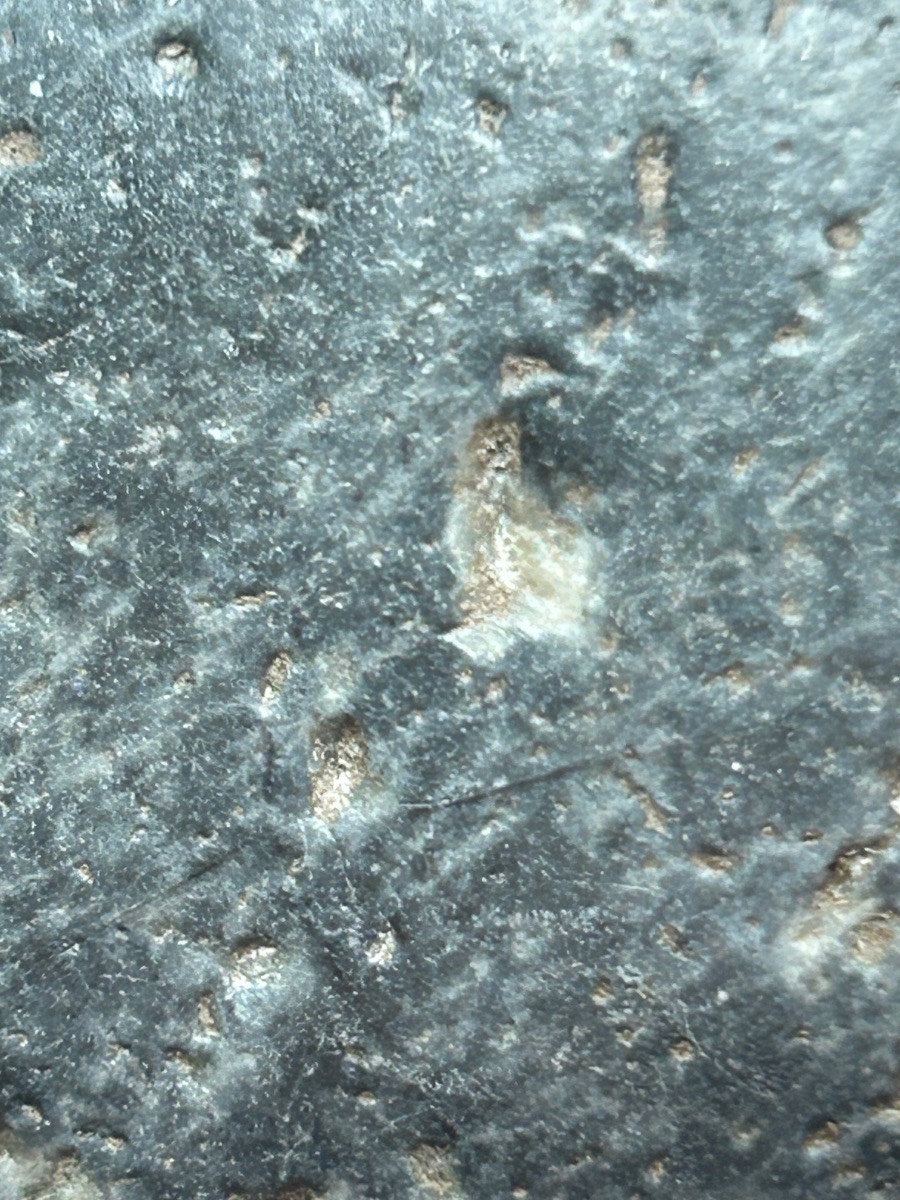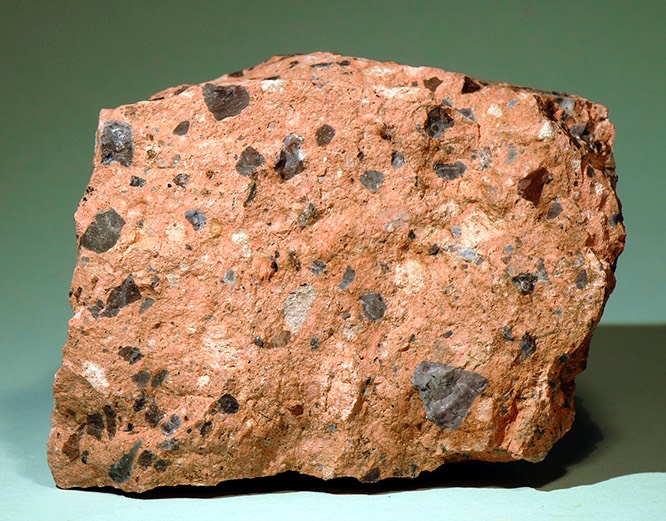This is a rock I found by the creek running through my land:
At first glance, it may not look strange at all. It looks for all the world like a plain, ordinary rock. But there are two contradictory features of this rock that perplex me. First, note how shiny it is; it reflects the incident light quite brightly. This rock has been polished to a sheen by centuries of erosion in water.
Shininess is one consequence of hardness. Hard rocks and hard wood can be polished to a bright, shiny appearance. I won’t bother measuring the hardness because the polish demonstrates my key point: this rock is hard.
Next, take note of the pockmarks in the rock:

What made all these pockmarks? They could not have been caused by impacts from other rocks; if the rock were weak enough that collisions with other rocks could cause such holes, then surely impacts from tiny rocks would have poked zillions of tiny scars, depriving the rock of any polish. No, those holes cannot be caused by impacts with rocks.
OK, perhaps these holes are the result of what geologists call “inclusions”. Here’s a photo of inclusions in another rock:

But no, these can’t be the result of inclusions that were somehow bumped out of the rock, for two reasons. First, inclusions occur in sedimentary rocks and some igneous rocks, but never in metamorphic rocks, because such rocks are cooked under very high pressures and temperatures, and any inclusions would have melted and been subsumed into the surrounding rock. Second, if there had been inclusions, there should be more inclusions visible that have not yet been broken loose from the rock — but no such inclusions are visible.
I decided to measure the density, a measurement carried out with a good set of old-time scales. For the weight, I got consistently 374.2 grams, but measuring the volume (by measuring the amount of water expelled when I slowly lowered the rock into a previously full container of water) was disheartening. I made three different measurements, each time reducing the amount of excess water due to splashing, but I still got 141.9 grams of water expelled, which implies a density of 2.64 gm/cc — about the same density as quartz. This bothers me a great deal, because it feels much denser than that. Tomorrow I shall pull a chunk of quartz out of my quartz pile (yes, I have collected quartz from all over my 40 acres of land and put it in a pile) and compare them.
I have examined the rock carefully under magnification, and all I
